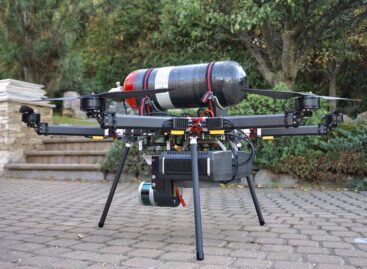Research program to help predict crop yields and identify plant diseases launched at SZTE
The project, which was launched at the University of Szeged (SZTE) with the support of the Advanced research grant of the National Research, Development and Innovation Office (NKFIH), uses spatial data analysis of satellite images and drone footage to help the widespread application of earth observation programs in the accurate prediction of crop yields and the early identification of plant diseases, the public relations directorate of the higher education institution informed MTI.

(Photo: Pixabay)
According to the announcement, due to the growing global demand for sustainable agriculture, accurate and efficient methods are needed for crop yield assessment and disease detection. As one of the three most important food crops in the world, wheat is particularly sensitive to various stress factors. Immediate identification and assessment of wheat stress levels during its cultivation is crucial for the implementation of effective plant protection strategies. The announcement quoted the research leader, László Mucsi, who explained that healthy and diseased plants, especially winter wheat varieties and their diseases, can be identified based on their spectral properties (different light reflection characteristics) by processing data from various imaging devices.
The aim of the four-year project is to apply advanced methods to crop yield assessment, plant disease and nutrient level detection using hyperspectral imaging and artificial intelligence techniques, integrating laboratory, field, drone-borne and satellite sensors. The most important result of the research will be the rapid analysis of multidimensional data sets – consisting of hundreds of layers – using deep learning or machine learning methods, in order to recognize stress effects and spatial information about them can be immediately delivered to end users.
The research program provides an excellent opportunity for experts to prepare with their basic research results for the CHIME hyperspectral satellite-based Earth observation program, coordinated by the European Space Agency, starting in 2028-29. The project won a grant of 120 million forints in the NKIFH Advanced research application, which aims to help internationally recognized experts in their scientific fields to further their research. 96 outstanding researchers won a total of about 10 billion forints in the application.
MTI
Related news
Hydrogen propulsion in aviation – Hungarian researchers are writing the future of aviation
🎧 Hallgasd a cikket: Lejátszás Szünet Folytatás Leállítás Nyelv: Auto…
Read more >Why buy Hungarian? Imported vs. domestic
🎧 Hallgasd a cikket: Lejátszás Szünet Folytatás Leállítás Nyelv: Auto…
Read more >New effective help arrives for the protection against grapevine cicada, drone detection and spraying has begun
🎧 Hallgasd a cikket: Lejátszás Szünet Folytatás Leállítás Nyelv: Auto…
Read more >Related news
How do young adults celebrate?
🎧 Hallgasd a cikket: Lejátszás Szünet Folytatás Leállítás Nyelv: Auto…
Read more >Vajda-Papír celebrates Ooops!’s 15th anniversary with a hybrid AI campaign
🎧 Hallgasd a cikket: Lejátszás Szünet Folytatás Leállítás Nyelv: Auto…
Read more >Pre-holiday shopping at up to half price
🎧 Hallgasd a cikket: Lejátszás Szünet Folytatás Leállítás Nyelv: Auto…
Read more >






